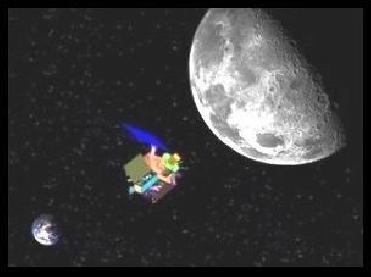
A File Photo
BANGALORE (PTI): Scientists from India and abroad, who designed the payloads -- scientific instruments -- on board Chandrayaan-1 spacecraft Monday exchanged ideas and observations on the data received from the moon mission, which terminated abruptly recently.
"Scientists were unanimous in appreciating the high quality of data sent by Chandrayaan-1 mission", Indian Space Research Organisation Spokesperson S Satish told PTI.
Chandrayaan-1 carried 11 payloads -- five designed and developed in India, three from European Space Agency, two from the US and one from Bulgaria.
The scientists at a technical review meeting here made presentations highlighting the data obtained, how they were different from earlier missions (of other countries) and the "new things" that they have found, an ISRO official said.
The meeting, termed as the first round of discussions, is expected to continue tomorrow and more such interactions are expected in the coming months as the data would be further analysed to look for finer details, the official said.
Chandrayaan-1 mission was launched on October 22 last year and it was expected to continue for two years. But after ten months of the launch, ISRO on August 29 terminated the odyssey after radio contact with the moon craft was lost and could not be re-established.
In May this year ISRO raised the orbit of Chandrayaan-1, which was at a height of 100 km from the lunar surface since November last year, to 200 km, saying the space craft in this higher altitude would enable further studies on orbit perturbations, gravitational field variation of the moon and also enable imaging lunar surface with a wider swath.
It was revealed later that the main objective of the orbit-raising move was because "environment (thermal and radiation) encountered by Chandrayaan-1 was more severe than anticipated by ISRO".
And also because the on board (redundant) sensors gyroscopes, pressed into service after star sensors failed, could be used from this orbit (unlike the 100 km orbit) to prolong the mission without ISRO needing to control the moon craft on a daily basis.
But, ISRO officials dismiss suggestions that the space agency was keeping setbacks under wraps, saying in space missions things of that sort are not uncommon and it can't go on giving updates when there are many instances of malfunctioning being set right in previous missions soon after they occurred.
 Next Article
Next Article












The Indian Air Force, in its flight trials evaluation report submitted before the Defence Ministry l..
view articleAn insight into the Medium Multi-Role Combat Aircraft competition...
view articleSky enthusiasts can now spot the International Space Station (ISS) commanded by Indian-American astr..
view article